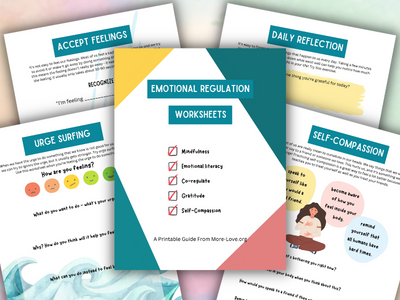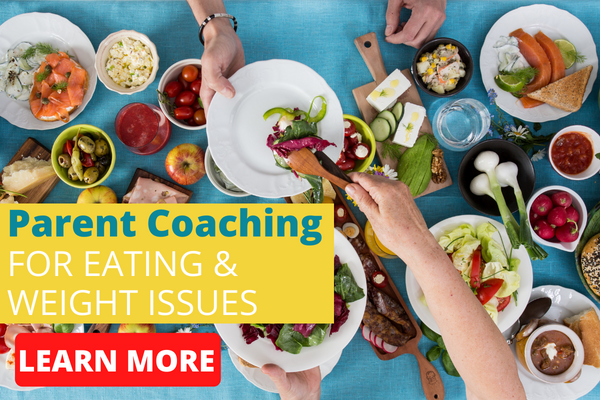
When your child is upset, sad, anxious, depressed, or any other negative feeling, it’s perfectly natural to think about food as a way to make them feel better. Who hasn’t thought about offering ice cream, a favorite meal, or a visit to Starbucks as a cure for the blues?
Most of us have used food as a form of soothing and nurturing when our kids are down and celebrating or rewarding them when they are up. There’s a good reason for this: food is the first way we nurture and respond to our child’s needs, but we need to be careful to not become over-reliant on food as a way to show our kids we love them.
Think back: the very first time your child was upset, you used food to soothe them (with either a bottle or breast). That’s exactly how the parent-child bond begins. There is nothing wrong with the instinct to soothe our kids with nourishing food. But this natural instinct can go awry if food becomes the primary way that we soothe and recognize our children.
What kids really need
Our children are deeply feeling individuals. They look to us, their parents, as a source of emotional regulation as well as a source of nourishment, nurturing, and love. While it’s OK to incorporate food into a soothing or celebratory experience, we should never mistake food as a substitute for our thoughtful attention.
What our kids really need is our undivided, nonjudgemental attention.
What our kids really need is our unwavering acceptance of them as whole, worthy human beings whom we love deeply and consistently.
To meet their needs, we need to approach them with love, compassion, and kindness. Most of the time they do not need us to give them anything more, with the exception of kind words such as:
- You are awesome
- I’m so proud of you
- I like being with you
- I want to know more about you
- I like spending time with you
- I want to care for you
- I want to keep you safe
- I love you
- I hear you
- I’m here for you
Emotional Regulation Worksheets
Give these printable worksheets to grow more confident, calm and resilient and feel better, fast!
- Self-Esteem
- Self-Regulation
- Mindfulness
- Calming strategies
How to give our kids what they need
Giving our kids ice cream when they’ve done something we approve of or chocolate when they’re down is not the same as giving them what they need emotionally. To meet our kids’ emotional needs, we must spend time with them and give them our full attention. Here is how we can do this:
1. Remove distractions: turn off the TV, put your phone on airplane mode, and move away from your computer and other devices. This should be required for any parent-child relationship. It is very hurtful to your child when you look at texts or are otherwise distracted when you are interacting with them. This goes both way – your kid should do the same.
2. Pay attention to non-verbal cues: watch your child’s body language, their
3. Mirror them: match your child’s posture, expressions, nonverbal cues, language, and other mannerisms to let them know you are on the same plane as them. Mirroring a person is a form of deep connection because it makes the person feel safe on a subconscious level.
4. Reflect back: rather than asking a lot of questions, which can be overwhelming, reflect what you hear them say. So if they say “I hate Mary – she was so mean to me today!” Instead of saying something like “you need to stop caring so much about what other people think about you,” say “it sounds like Mary wasn’t very nice to you.” This tiny difference makes a huge impact and helps your child feel heard rather than controlled.
5. Show interest: encourage the moment to last longer by showing interest in whatever your child is telling you. We show interest by making eye contact and using our faces to show that we are listening. Raising our eyebrows, squeezing our eyes shut, and saying things like “oooooh!” and “ugh!” can show our child that we are really listening and will help them open up and say more.
6. Don’t interrupt: give your child the floor. Don’t interrupt their story or commentary even if you feel you have something really valuable to contribute or think you really need to ask a question to understand what’s going on. If it’s worth saying, then it can wait. Allow your child to vent, rage, or lament for as long as they need to without interrupting them. Wait for a break in their conversation, and then look for a sign that they want to hear something from you.
7. Don’t give advice: 90% of the time our responses should be reflective rather than directive. Avoid telling them what to do or how to handle a situation unless they specifically ask for your opinion. Most of the time, our kids are very capable of solving their own problems, but they need us to give them a safe place to process their various feelings. Ideally, wait for your child to ask your advice before you try to give any.
How we treat kids becomes how they treat themselves
The way we treat our children will become their inner conscience and the voice they use inside their heads when things go wrong. This is why we have to think carefully about how we respond to difficult emotional states like fear, anger, sadness, and more.
Our voices become the voices in our kids’ heads.
Responding to our children with unconditional acceptance, listening, and kind words will teach our child to respond to their own needs with the same compassion.
For example, when our college student gets a low grade on a test, they may respond by eating an entire carton of ice cream, or they may respond by processing their feelings of fear and shame and then meet with the professor to learn about how they can do better next time.
When our adult child gets reprimanded at work, they may respond by eating an XL pizza and drinking a bottle of wine while watching Netflix, or they may go out for pizza with a trusted friend and talk about their work experience and troubleshoot the situation.
Which would you prefer for your grown child?
Helping kids build emotional toolboxes
There is nothing wrong with using food as part of a soothing ritual. Food is inherently soothing to humans, and emotions and eating disorders are linked. So what we want to think about is that our child has an emotional toolbox that they will use to soothe their negative emotional states.
If the only tool in their toolbox is food, they are missing out on many other self-soothing techniques.
The way we parent makes a huge impact on our child’s emotional toolbox. We want to provide them with compassion and acceptance and model thoughtful listening. This will help them avoid becoming overly-reliant

Ginny Jones is on a mission to empower parents to help their kids recover from eating disorders, body image issues, and other mental health conditions. She’s the founder of More-Love.org, an online resource supporting parents who have kids with eating disorders, and a Parent Coach who helps parents who have kids with mental health issues.
Ginny has been researching and writing about eating disorders since 2016. She incorporates the principles of neurobiology and attachment parenting with a non-diet, Health At Every Size® approach to health and recovery.


